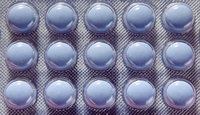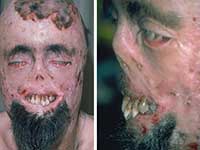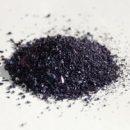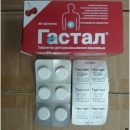Marfan syndrome - is considered a disease «Conditionally deadly», But this does not mean that nothing can be done. The search for effective methods of treatment continues to this day, and while tested methods are used - drug and operational.
Content
 Unfortunately, not yet found funds to normalize exchange in connective tissue in patients with Martan syndrome. Although some improvement is observed with long-term use of anabolic steroids and large doses of vitamin C.
Unfortunately, not yet found funds to normalize exchange in connective tissue in patients with Martan syndrome. Although some improvement is observed with long-term use of anabolic steroids and large doses of vitamin C. The basis of drug treatment is the purpose of B-adrenoblockers. In the event of an expansion of the aorta, and especially in the presence of regurgitation (reverse blood flow), they reduce the emission of the aorta and, accordingly, the load on its walls, adjust the accompanying arterial hypertension. The dose of propranolol can be from 40 to 200 mg / day. As experience shows more profitable to use durable B-adrenoblastors, for example, atenolol at a dose of 25 to 150 mg / day.
Regurgitation under the prolapse of the mitral valve, arrhythmia also requires the appointment of B-adrenoblockers. It is believed that B-adrenoblasts prevent the risk of sudden death in patients with Marfan syndrome. However, it is also necessary to know that B-adrenobloclars can contribute to the deterioration of the patient's condition, which is manifested by the gain of dizziness, weakness, decrease in working capacity, especially in young people with hypotension.
The pathology of the skeleton with marfane syndrome is usually revealed to age for 5 years and sometimes progress with incredible speed, although the elongated dimensions of the limbs and fingers are the so-called dollyoshelomelia and the arahanodactilia have already been noticeable in a newborn. It is believed that in such cases the deficiency of some macroelements (calcium, magnesium, zinc, copper) and proteins participating in «Construction» connective tissue, so they begin to talk about the efficiency of food additives containing the above macroelements, as well as hyaluronic acid, vikasol, secopalcyferol.
In the blood of patients with Marfan syndrome, an elevated level of somatotropic hormone is often noted, so for «Suppression of excess growth» It is recommended to use high-log entripats in nutrition from early childhood to reduce the secretion of somatotropic hormone.
The patients with marfan syndrome should contain a sufficient amount of magnesium (studies conducted on laboratory animals, showed that with artificial damage to the aorta, during the subsequent diet with a high content of magnesium, a faster recovery of defect is underway than with diet with normal and low content). Because the use of magnesium preparations leads to the drug correction of magnesium deficiency in the prolapse of the mitral valve.
An exemplary diagram of therapy (treatment) with an impact on the connecting tissue under the marfana syndrome must necessarily include ascorbic acid (in the absence of oxaluria and urolithia pathology) in the form of cocktails with milk, yogurt; dose - from 1.0 to 4.0 g per day depending on age. Preparations containing glucosamine sulfate are recommended; dose aged 12 years and adults - 1.5 g once daily during meals, to drink with plenty of water; Course - 1.5 months. In the next year, you can use drugs containing chondroitinixulfate. Dose: Children under the age of 1 year - 250 mg, from 1 year to 5 years - 500 mg, from 6 to 12 years - 500-750 mg, adults - 1.5-2.0 g during meals; drink with plenty of water; Course - 2 months. Also, an amber acid can be included in the course of treatment (in a capsule 100 mg); 1-2 capsules 2 times a day, course - 3 weeks. Magnesium preparations are widely used.
Another recommended preparation - chloride carnitine, 20% solution; Dose for children aged 1 year - 5-10 drops, from 1 year to 6 years - 15 drops, from 6 to 12 years - 30-40 drops, over 12 years old - 1 teaspoon 3 times a day, after eating; Course - 1 month. Vitamin and mineral complexes are also often recommended - 1 month; Additives containing L-lysine; dose - depending on age; Multiplicity of reception - 2 times a day; Course - 1 month; tocopherol; dose aged 12 years and adults from 400 to 800 IU in day.; Course - 3 weeks.
Operational treatment of chest and spine deformations is a traumatic procedure, often complicating pleuritic, pericarditis, pneumonia in early and late postoperative periods. The question of the feasibility of thoracoplasty during the deformations of the chest was repeatedly discussed at the symposiums dedicated to the pathologies of the connective tissue, and today the specialists of various regions adopted the position, denying the feasibility of thoracoplasty in Martan syndrome.
According to the latest data, postoperative mortality in patients with Martan syndrome is constantly decreasing (which cannot but rejoice). After the operations carried out using prosthetics, patients are fully able bodied.
And now a few words about the activity of patients. Physical exertion is not excluded, but you need to remember that everything is good in moderation. The issue of contact, as well as group, gaming sports, and gravity work has been clearly negatively adopted. Welcome swimming.









